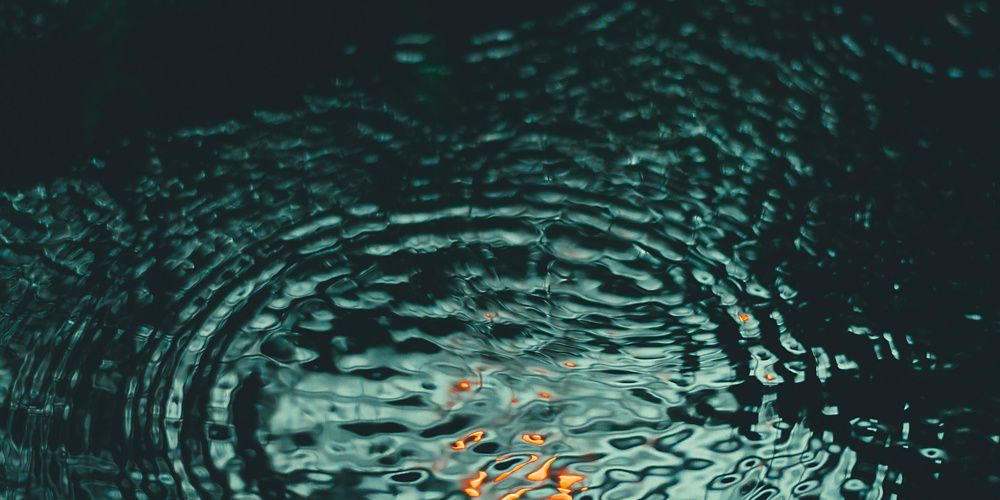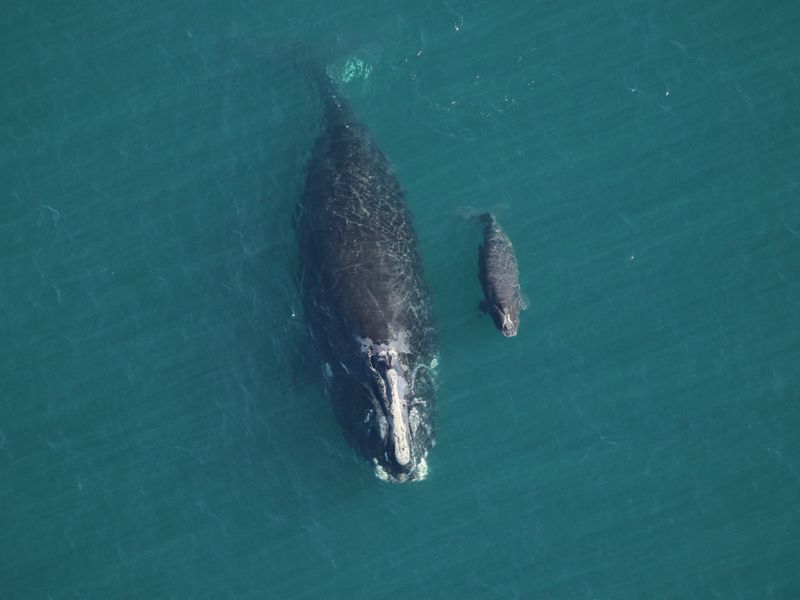
North Atlantic Right Whales A North Atlantic right whale swims side-by-side with her calf. © Georgia Wildlife Resources Division
Morning fog clings to the surface of the water as Carl LoBue guides a small research vessel through the damp air and into the open Atlantic. A pod of dolphins arcs through the waves, and the misty spout of a humpback whale erupts like a signal flare. For LoBue, marine scientist and New York oceans director at The Nature Conservancy, these moments are more than breathtaking—they’re signs of a recovery decades in the making.
Now, that revival is driving a new kind of action: Eyes on the Water: Boating with Whales, a free online course designed to help boaters safely navigate whale habitats. The interactive course, available in English and Spanish, simulates a journey through New York’s iconic waterways, teaching users to recognize whale behavior, avoid collisions and report sightings.

“Whales are coming back,” says LoBue, scanning the horizon. “But they’re returning to waters that are busier than ever before. We need more eyes on the water—watching out for whales and ensuring safer seas for captains, crews and marine life.”
Little Fish, Big Impact: How Menhaden Sparked a Marine Comeback
LoBue has spent much of his career studying the intricate food webs that sustain marine life and coastal communities. One of his biggest wins? Championing protections for Atlantic menhaden—small, oily fish that fuel the diets of whales, dolphins and seabirds.
“If you want big fish, you need little fish for them to eat,” he often says. That philosophy helped The Nature Conservancy successfully advocate for a 2019 New York State law that eliminated purse seining for menhaden, a practice that used large nets to capture this vital forage fish. The law was widely supported by Long Island baymen, recreational fishermen, charter boat captains, scientists, marine trades and wildlife enthusiasts.
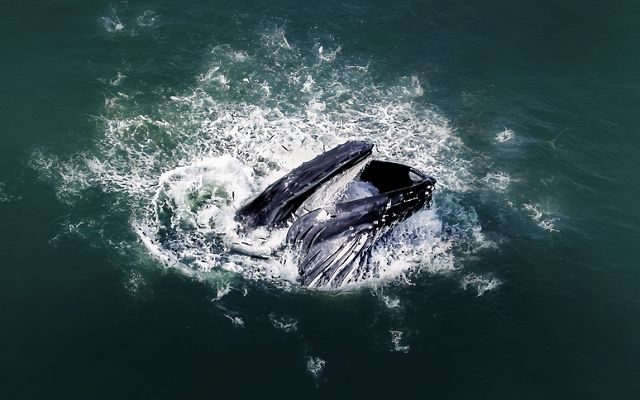

Building on that momentum, The Nature Conservancy helped secure a major policy shift in 2020, when the Atlantic States Marine Fisheries Commission adopted ecological reference points—a science-based approach that considers predator needs when managing fish stocks. This collective decision was a turning point. By considering and measuring what the ecosystem needs to thrive, New York scientists and fishermen helped restore a critical link in the food web.
As large schools of menhaden became more common along New York shorelines, the area once again became a foraging hotspot for fish, marine birds and marine mammals. “We anticipated some of this when we were pushing for menhaden fishing regulation reforms over a decade ago, but watching humpback whales routinely feeding within sight of the NYC skyline wasn’t on the top of my prediction list,” LoBue says.
Their return isn’t just about food. It’s also the result of more than 50 years of protections under the Marine Mammal Protection Act and Endangered Species Act, which have helped whales and dolphins recover and reclaim habitat. Whale-watching tours from several ports in New York and New Jersey are now booming, and sightings in New York Harbor are no longer rare—a striking return on years of conservation investment and leadership.
A Crowded Ocean, A Growing Risk
But the return of whales has coincided with a surge in human activity. Parts of the ocean off New York and New Jersey now resemble busy neighborhoods—with boats, ships and gear all moving in different directions. And like children crossing a busy street, whales rely on us to slow down and pay attention.
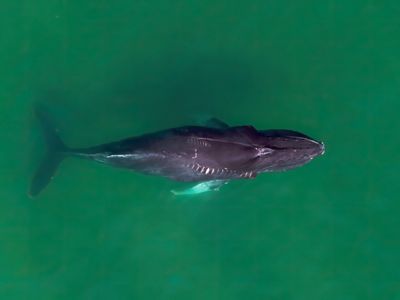
“The growing presence of whales and dolphins here is a powerful reminder that people and wildlife can share even the most crowded corners of the ocean,” LoBue adds. “For this coexistence to last, captains must navigate with the same care they would driving near a playground or school zone—staying alert, patient and ready to respond.”
As more whales are spotted with wounds from vessel strikes and fishing gear entanglements, it’s clear how fragile this balance can be. In August, an 18-foot minke whale died after colliding with a boat in Barnegat Bay off the Jersey Shore. The impact knocked a passenger overboard and nearly capsized the vessel.
In February, researchers spotted a North Atlantic right whale mother and calf foraging near five anchored container ships in the Ambrose Channel—the busiest shipping lane in the Port of New York and New Jersey. The mother had deep propeller scars from a previous strike, and her calf was navigating a maze of steel hulls and engine noise.
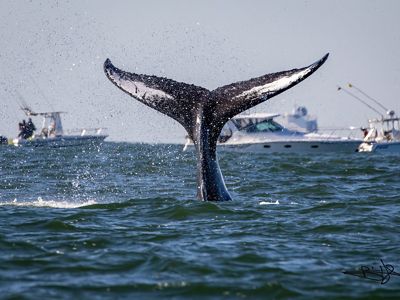
These incidents reflect a troubling pattern. Whales spend much of their time near the surface—where they rest, feed and breathe. It’s also where they’re most vulnerable. According to the National Oceanic and Atmospheric Administration and independent scientists, vessel strikes and fishing gear entanglements are the leading causes of whale deaths, threatening species from humpbacks to the critically endangered North Atlantic right whale. Eyes on the Water was built to help boaters avoid both of those risks—a timely solution backed by science and supported by those who care about the future of our oceans (available in English and Spanish).
Eyes on the Water: How It Works and What You’ll Learn
The Eyes of the Water course simulates a journey from Captree State Park to Great Kills Harbor, teaching boaters how to spot whales, understand their behavior and report sightings.
“It’s not just about avoiding collisions,” LoBue explains. “It’s about building a community of people who understand the ocean and want to protect it. You’re not just steering a boat—you’re entering someone else’s home. Every ripple, every sound, every movement matters.”
LoBue and his team worked closely with state agencies, educators and other marine experts to ensure the curriculum is accurate and accessible. It’s designed for easy sharing—flexible enough to be delivered as part of New York's approved safe-boating courses or taken by those who have already completed a safe boating course without whale-safety training.
Every certificate earned represents a boater who’s better equipped to protect marine life. “No one wants to hit a whale, and yet it happens all too often,” says LoBue. “We’re helping captains do what they already want to do—reduce their risk and use the ocean wisely and safely.”
Earn Your Certificate
While tailored for boaters in the New York and New Jersey area, much of the course is applicable to boaters in other coastal states. (Also available in Spanish)
Protecting Marine Wildlife through Education and Conservation
The course is just one piece of a larger strategy led by Carl LoBue’s team at The Nature Conservancy to ensure healthier habitats for marine life and safer waters for people. Their work also includes restoring shellfish reefs and salt marshes, reviving eelgrass meadows, tracking seabirds, and reducing nitrogen pollution throughout Long Island waters—all of which contribute to TNC’s vision for a healthy ocean.
Quote: Carl LoBue
You’re not just steering a boat—you’re entering someone else’s home. Every ripple, every sound, every movement matters.
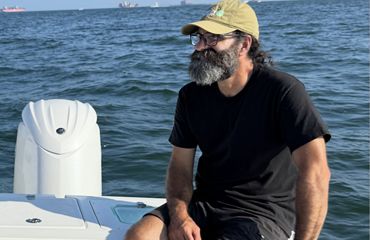
Cleaner bays and estuaries mean more forage fish. More fish mean more whales. And informed boaters help prevent dangerous encounters. This is conservation in motion—powered by science, shaped by community, and sustained by people who believe in protecting nature.

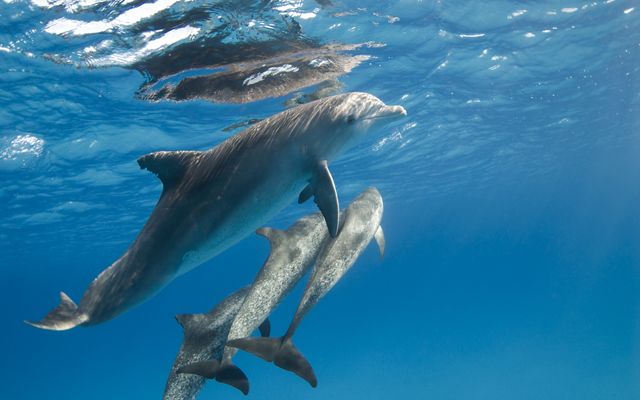
Back on the water, LoBue’s high frequency radio crackles to life. A whale watching boat from Freeport is looking for confirmed sightings. “Hey Captain,” LoBue answers. “We’ve got a mom humpback with a calf in 50 feet of water off the roundhouse.” After taking a long look, he smiles, stows his gear, and turns the boat toward shore.
“They’re here,” he says. “Now we just have to keep it that way.”
We need your help
Your support ensures we can continue protecting and conserving our oceans.
